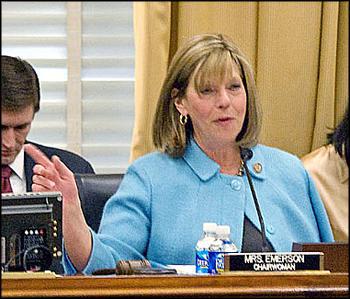
Scarce supplies of crops lead to higher costs for feed and trickle through our economy until they reach us in the form of higher prices at the grocery store. Along the way, they can hit businesses from the auto dealership to the local bank.
From our farms and ranches come our food, along with jobs, investment and all kinds of economic activity in rural communities. Agriculture is the first domino in a long chain of economic events that, good or bad, affect pretty much every family and business in America. On the good side of the balance sheet, our producers deliver. They are responsible for the world’s safest, most abundant, most affordable supply of food. The American grocery bill is lower than that of any other developed nation, and agriculture is largely responsible for a narrowing trade deficit between the U.S. and the rest of the world.
But when times are tough, we run the risk of losing an increasing share of the family budget to food costs, and we risk losing family businesses in agriculture entirely. Strong agricultural policy gets rural America though the tough times, and we have to be sure it continues to guarantee the presence of these local producers in our counties and communities.
Every August, I take several days to see the latest advancements, investments and occurrences in Southern Missouri agriculture. This year, I’m seeing a ranch for alpacas, visiting a sawmill, taking a look at the first peanut farm I’ve ever seen, and talking about flood protection with the Mississippi River Commission. But nearly every usual topic on the Farm Tour is going to be overshadowed by drought.
Like nothing else, the drought has highlighted the ramifications of letting ag disaster programs lapse. Frustrations abound without a clear plan to pass a Farm Bill, with some livestock disaster assistance programs allowed to expire, with a debate raging over the cost of food allowed to overshadow the costs faced by producers of food. Agriculture has always been about good energy policy, good tax policy and good trade policy – but for the moment we have to focus on good ag policy.
As I listen to what these producers have to say about the near-term future of agriculture and their businesses, I always bear in mind how valuable these folks are to Southern Missouri. They are taking on risk, they are innovating in the field, on the ranch and at the dairy farm, and they are doing it with their own blood, sweat and – this year – some tears.
Supporting agriculture means being there when this vital industry needs us most. Today, we’re presented with a perfect case study in how bad things can get on the ranch, on the farm. After this year, we have every reason to renew our commitment to keep America at the forefront of an industry that feeds us as well as the rest of the world.
Jo Ann Emerson of Cape Girardeau represents the Eighth District of Missouri in the U.S. House of Representatives. Her Cape Girardeau Office may be reached at 573-335-0101.
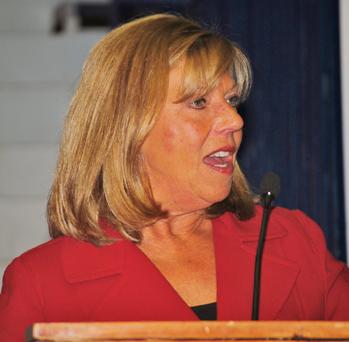
Jo Ann Emerson of Cape Girardeau represents the Eighth District of Missouri in the U.S. House of Representatives. Her Cape Girardeau Office may be reached at 573-335-0101.
Link of Interest
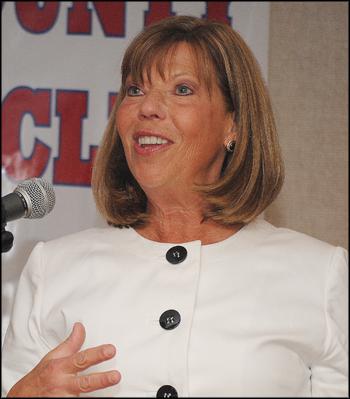
By Jo Ann Emerson
“Mr. Gorbachev, open this gate. Mr. Gorbachev, tear down this wall.”
These resolute words of President Ronald Reagan rang through West Berlin and echoed around the globe 25 years ago this week. To a world divided into free and not free, the President’s demand went straight to the heart of the defining conflict for an entire generation.
Only a few years later, the Cold War would end and a new era of communication, trade, opportunity and understanding would begin between East and West. The Berlin Wall would be destroyed both as a barrier and as a symbol of all the barriers between people and freedom.
The Berlin Wall served two purposes for the Cold War Communists. First, it kept people from leaving a life that had been planned out for them by the government, from cradle to grave. The Wall held captive a society in which freedom was suppressed, propaganda ruled the airwaves, bread lines were lengthy, and the patience of the government for criticism was short.
In its other purpose, the Berlin Wall kept out the machinery of democracy, examples of liberty in the rest of the world like free elections, free press, free speech, dissent and assembly, and free markets. In a world of sunlight, the Wall cast a long, dark shadow. The reasons to open the gate and to tear down the wall were many, but among the most vital was to unite an imprisoned people with the freedoms that allowed them to live out their human destiny.
President Reagan stood firm against the Soviet Union as more than a matter of military necessity. The resolve of the United States during this tense era was part self-preservation in the face of a vast nuclear arsenal, but also part instruction in the value of freedom and liberty. The message of our Founders was not to keep a candle of independence burning in a dark world, but to expand these ideals endowed upon all of us by our Creator.
History does not often provide us with inflection points like President Reagan’s speech at the Brandenburg Gate. Two outcomes were possible at the Berlin Wall: It would either fall to the power of human freedom or it would fall because communism was expanding its darkness into the light of the free world. Hundreds of thousands of American troops, our Allies in NATO, and countless people all over the world contributed to the ultimate goal of toppling the wall and spreading a message of freedom into the Eastern Bloc of Europe and beyond.
Today, we are still charged with being a beacon of freedom to the world. Things are rarely as black-and-white as they were when one part of the world was behind the wall, and another part of the world was outside of it. But our challenges remain to be as resolute as Reagan was, to demand that liberty go places where the thirst for freedom is great but the power of government is even stronger.
Military force cannot alone win freedom for oppressed people. Diplomacy won’t work in a vacuum, either. But the abiding spirit of the American people to be the source of power for our government – in elections, in a free press, as upstanding citizens of our communities, as free people – is the strength that gives courage to others in dark places. Twenty five years ago, Reagan gave hope to East Germans in one such dark place, and today they have democracy, elections and freedom of many kinds – most of all, freedom from fear.
Jo Ann Emerson of Cape Girardeau represents the Eighth District of Missouri in the U.S. House of Representatives. Her Cape Girardeau Office may be reached at 573-335-0101.
Link of Interest
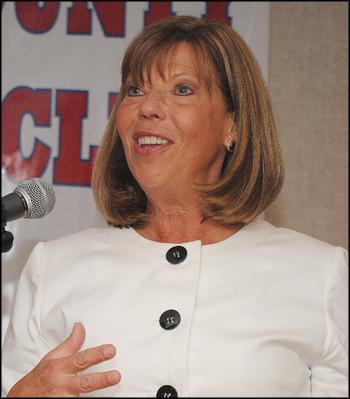
New data from the Congressional Budget Office measures the share of federal debt per person in the U.S. in the recent past, the present and the future. It is stark and startling, but in a single generation the figure is set to triple.
In 2008, each American's share of the federal debt was $35,000. Today, only four years later, it is $50,000. In 2037, every American will be $147,000 in debt as a result of reckless spending, runaway programs and the inability of policymakers to come up with smart solutions today so we can avoid tough choices tomorrow.
And the numbers get bigger against the backdrop of American households, rather than individual citizens: in 2037, every family will bear $382,000 of federal debt -- just 25 years from today.
Imagine those figures next time you drive down the street in your neighborhood. Every house you count represents $95,000 in federal debt today. Every five driveways you pass is $500,000 today... and nearly $2 million in 25 years. In a Missouri city with a population of 1,000 people, the total represents $50 million of federal debt.
Stopping the accumulation of this massive debt depends on two things: the revenues the government takes in and the expenditures the government pays out. Both can be part of the solution.
On the revenue side, economic growth can make a substantial contribution to the federal balance sheet. We should invest in job-creating policies and refrain from regulations that slow growth and kill jobs. Tax fairness is important, too, to prevent fraud and to promote a level playing field for all Americans.
On the spending side, there is even more room for progress. By looking at the tax dollars we spent yesterday, today and tomorrow, we can reduce future federal deficits. I wrote legislation, for example, that trims $2 billion from the President's budget for the Treasury, the IRS, GSA and the 9th Circuit Court of Appeals in 2013. I'll fight to get that significant reduction enacted into law. If we win this argument in Congress and with the White House, we will have cut more than 12 percent in this area of federal spending since 2010.
And we have to assess the long-term health of federal programs for the possible reforms that not only save tax dollars, but keep important benefits alive and intact for the next generation. When the trustees of programs like Medicare and Social Security say they are going broke, we have to pay attention. One side wants to pay for these programs with higher taxes, and the other side wants to find reforms that extend them for future generations without changing terms or benefits for Americans drawing on them today.
Because if we anticipate our children's shares of the federal debt to triple in one generation -- and we do -- then we must be mindful of the legacy they can expect to leave their children, our grandchildren, in the generation after that.
Jo Ann Emerson of Cape Girardeau represents the Eighth District of Missouri in the U.S. House of Representatives. Her Cape Girardeau Office may be reached at 573-335-0101.
Link of Interest
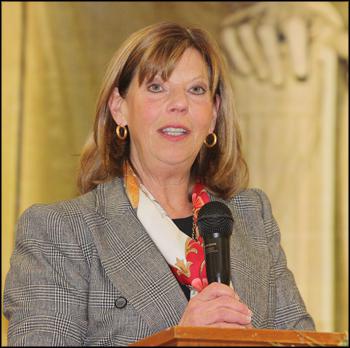
By Jo Ann Emerson
Something amazing happened in Bourbon, Missouri last week. Two weeks prior to Memorial Day, a group of veterans and family members gathered at American Legion Post #81 in Bourbon to dedicate their new building. And on the program was a woman named Sheila Wood.
I started working with Sheila in September of last year to get her cousin, 2nd Lieutenant Dean Gilroy Murphy, the Purple Heart he earned when he was injured at Iwo Jima 67 years ago. His story is a definitive one of military service during World War II, only with a tragic end. From Camp Pendleton in California, Lieutenant Murphy shipped out on November 12, 1944. He died on April 7, 1945, during the turning-point battle of the Pacific Theater in World War II, twenty days before he would have turned 21 years old.
The family never claimed Lieutenant Murphy’s Purple Heart until cousin Sheila took on the project last September. We had the medal from the Department of Defense by December.
Last week, as we dedicated the American Legion Post in Bourbon, the Murphy family bestowed Lieutenant Murphy’s Purple Heart on the Post. They entrusted it to the American Legion with the understanding that the medal would be displayed so that Lieutenant Murphy would not be forgotten, as the award itself had been forgotten, for so long.
Ceremonies involving our veterans and their belated awards are always moving and always special, but this one was especially wonderful. So many American heroes are overlooked because of their modesty. So many tales of bravery and sacrifice are never passed on. So many honors and awards end up in drawers and lock boxes when they should be shared. Yet, these virtues cannot survive from one generation to the next unless we talk about them.
Blood, sweat and tears are contained in each Purple Heart awarded by our country. The medal represents an incredible cost in human terms to entire families. Without Americans who are willing to sacrifice for our nation and our freedoms, however, we would all be lost. So we must know these stories and we must remember them.
Since the Purple Heart was established in 1932, it has honored the bravery and the pain endured by exceptional men and women in the service of our country. For 80 years, these medals have been bestowed on patriots and heroes. Purple Hearts are not recommended; they are earned. It is the oldest military award still given to U.S. servicemembers.
And each Purple Heart has its own story. They are attached to veterans who put our country before themselves, and the circumstances of their sacrifices teach us a lot about the cost of the freedoms we treasure as Americans. Now, Lieutenant Murphy’s story can be told and remembered.
His is a Purple Heart for all of Missouri.
I’m so glad to tell his story, to honor his service and to thank his family for making such a selfless gift to their community.

